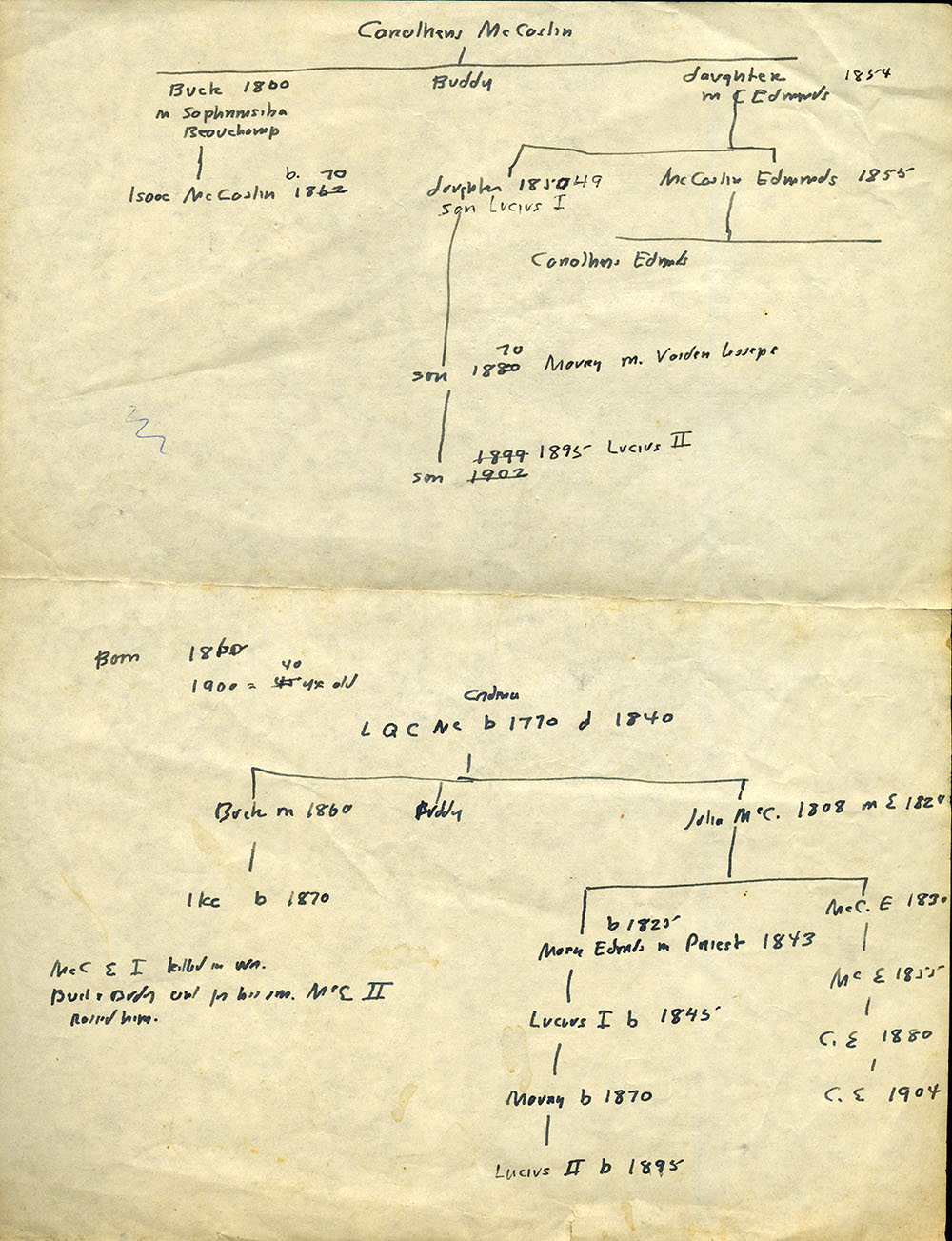
 |
CLOSE WINDOW |
 William Faulkner Foundation Collection, 1918-1959, Accession #6074 to 6074-d, Albert and Shirley Small Special Collections, University of Virginia Library, Charlottesville, Va. [Item Metadata: IA:13 GO DOWN, MOSES Chart 1 p. (1 R, 0 V) on 1 l.] |
|
Explanations: "Carothers McCaslin" and "L Q C McC" are the same person, Lucius Quintus Carothers McCaslin. The bottom table notes that he was born in "Carolina" in 1770 and died in 1840. It's certainly worth noting that all these women's names are erased in the published text. It should also be pointed out that these tables do not include the Beauchamp family, the mixed race descendants of Old Carothers' sexual relationships with two of his slaves, even though that strand of the family is prominent in The Reivers. And it's interesting to watch Faulkner working hard to get birthdates right. There is a great deal of indeterminancy in Faulkner's imaginative world, but there is also a side to his artistic temperament that strives for specificity and order. On the other hand, most of the dates and details and even some of the names on these charts are not consistent with either Go Down, Moses or The Reivers. For example, in "Was" McCaslin Edmonds is already living with Buck and Buddy in 1859; no mention is made there of what happened to his parents, but the story makes it clear that they were dead at least a year before the War. |